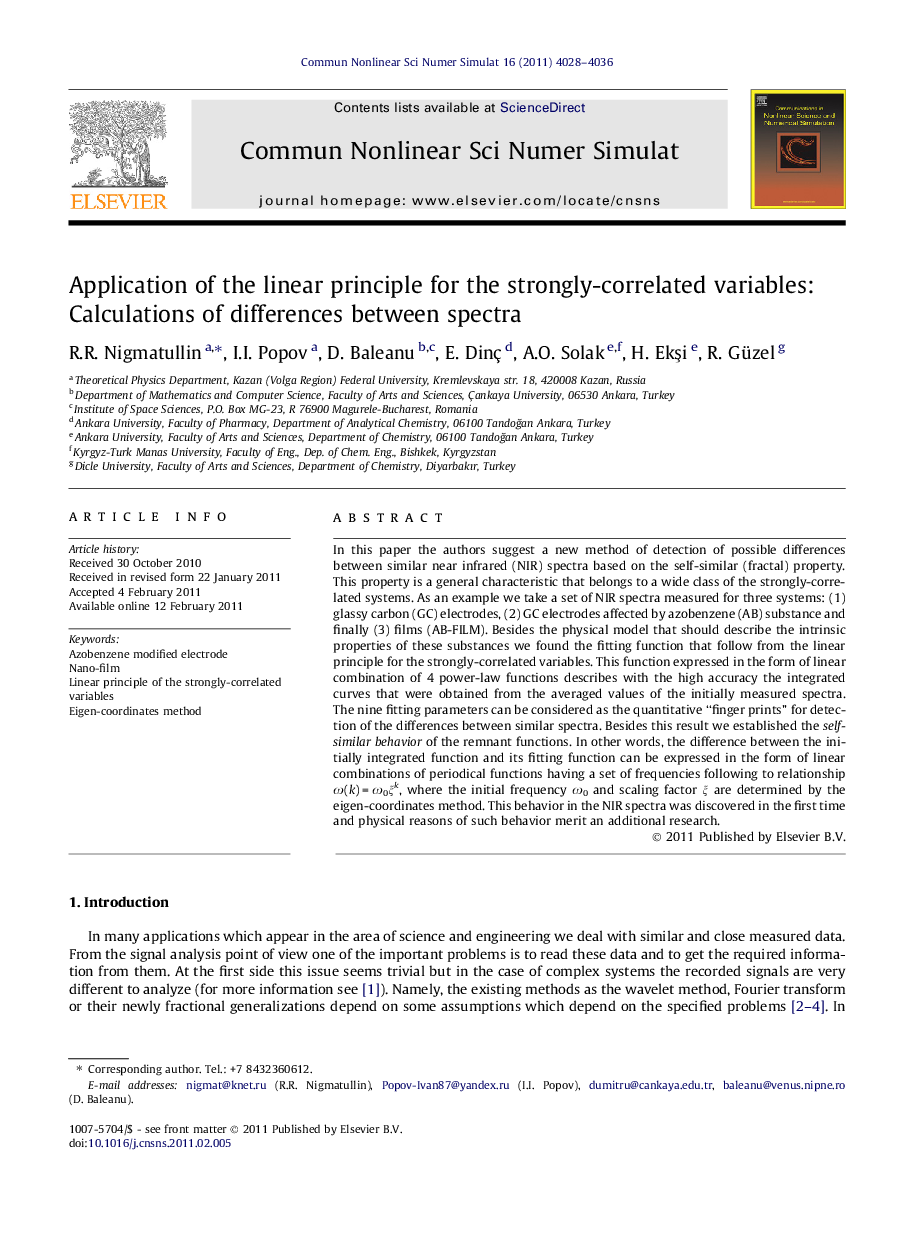| Article ID | Journal | Published Year | Pages | File Type |
|---|---|---|---|---|
| 755996 | Communications in Nonlinear Science and Numerical Simulation | 2011 | 9 Pages |
In this paper the authors suggest a new method of detection of possible differences between similar near infrared (NIR) spectra based on the self-similar (fractal) property. This property is a general characteristic that belongs to a wide class of the strongly-correlated systems. As an example we take a set of NIR spectra measured for three systems: (1) glassy carbon (GC) electrodes, (2) GC electrodes affected by azobenzene (AB) substance and finally (3) films (AB-FILM). Besides the physical model that should describe the intrinsic properties of these substances we found the fitting function that follow from the linear principle for the strongly-correlated variables. This function expressed in the form of linear combination of 4 power-law functions describes with the high accuracy the integrated curves that were obtained from the averaged values of the initially measured spectra. The nine fitting parameters can be considered as the quantitative “finger prints” for detection of the differences between similar spectra. Besides this result we established the self-similar behavior of the remnant functions. In other words, the difference between the initially integrated function and its fitting function can be expressed in the form of linear combinations of periodical functions having a set of frequencies following to relationship ω(k) = ω0ξk, where the initial frequency ω0 and scaling factor ξ are determined by the eigen-coordinates method. This behavior in the NIR spectra was discovered in the first time and physical reasons of such behavior merit an additional research.
Research highlights► A new method of detection of differences between similar spectra is proposed. ► The self-similar behavior identified. It belongs to a wide class of the strongly-correlated systems. ► The self-similar behavior for a certain class of remnant functions was found.
